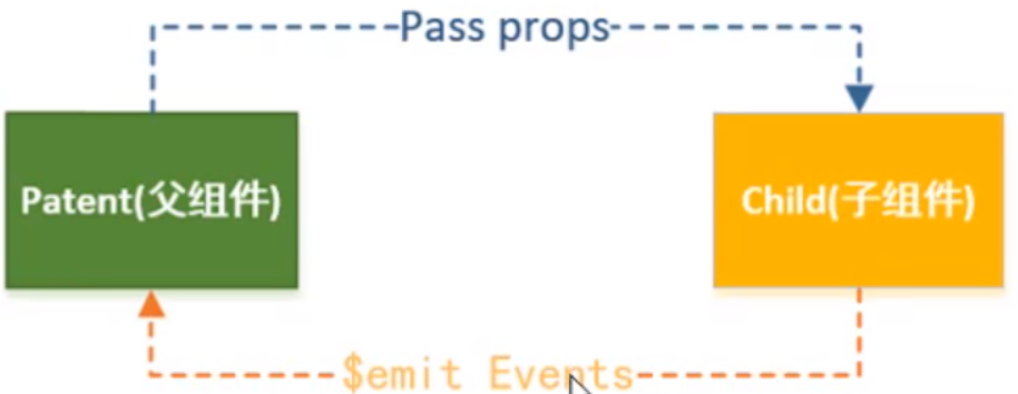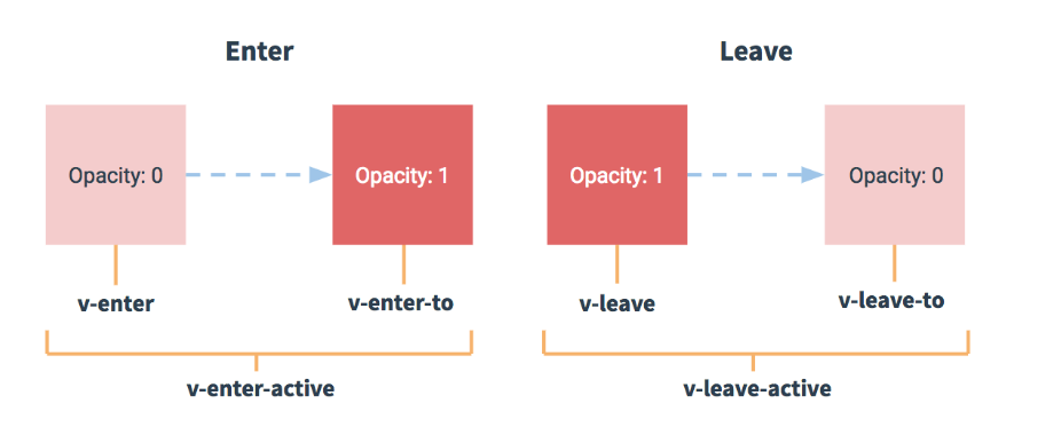slot插槽
vue提供了一种将父组件的内容和子组件模板整合的方法,内容分发
如果想在组件内部添加内容的话,就在组件模板内部对应的位置添加slot标签,而且添加上name属性,指明与外部的标签相通,如果不写name属性的话,将外面所有未命名的标签添加到该位置上
<div id="app">
<father>
<p slot="zha">我叫渣渣辉</p>
</father>
<hr>
<father></father>
<hr>
<father>
<p slot="hi">他叫XXX</p>
<p slot="she">她叫ZZZ</p>
<p slot="you">你叫CCC</p>
</father>
</div>
<template id="add">
<div>
<slot name="zha"></slot>
<slot name="hi"></slot>
<p>我叫Gordon-Liu</p>
<slot name="hui"></slot>
<slot name="she"></slot>
<slot name="you"></slot>
</div>
</template>
<script>
Vue.component("father",{
template:"#add"
})
new Vue({
el:"#app"
})
</script>
第二种方法:
v-slot必须在组件或template标签中使用,v-slot:p1就相当于上面的意思,给他后面附一个值,
先在组件内拿取属性的属性值,然后上面赋的值就可以用
<div id="app">
<hello>
<template v-slot:p1="info">我叫... {{info.msg}} / {{info.arr}}</template>
</hello>
</div>
<template id="add">
<div>
<slot name="p1" :msg="msg" :arr="arr"></slot>
</div>
</template>
<script>
Vue.component("hello",{
template:"#add",
data(){
return {
msg:"qwe",
arr:[1,2,3,4]
}
}
})
new Vue({
el:"#app"
})
</script>
组件之间通信方式
1、父子组件传值

<div id="app">
<father></father>
</div>
<template id="father">
<div>
<p>这是父组件...{{Msg}}</p>
<hr>
<son :change="chan"></son>
<!-- 2、该方式也可以获取整个函数(不加括号) -->
</div>
</template>
<template id="son">
<div>
<p>这是子组件...{{msg}}</p>
<p><button @click="change(msg)">对父组件说的话</button></p>
<!-- 4、最后点击调用此方法 -->
</div>
</template>
<script>
Vue.component("father",{
template:"#father",
data(){
return {
Msg:""
}
},
methods:{ //1、整一个方法,子组件的值改变的时候,父组件的内容也随着变动
chan(val){
this.Msg=val
}
}
})
Vue.component("son",{
template:"#son",
props:["change"], //3、将其变为父组件方法内的函数
data(){
return{
msg:"今天下雨"
}
}
})
new Vue({
el:"#app"
})
</script>
第二种方法:自定义事件和$emit必须一起使用
<div id="app">
<father></father>
</div>
<template id="father">
<div>
<p>这是父组件....{{Msg}}</p>
<hr>
<!--@change自定义事件与下面的$emit同时用 -->
<son @change="chan"></son>
</div>
</template>
<template id="son">
<div>
<p>这是子组件...{{msg}}</p>
<p><button @click="cha">对父组件说的话</button></p>
</div>
</template>
<script>
Vue.component("father",{
template:"#father",
data(){
return{
Msg:""
}
},
methods:{
chan(val){
this.Msg=val
}
}
})
Vue.component("son",{
template:"#son",
data(){
return {
msg:"今天有雨"
}
},
//$emit相当于导火索,调用此方法的话,就会触发该事件,
// 将第二个参数的内容传到上面自定义事件中的函数
methods:{
cha(){
this.$emit("change",this.msg)
}
}
})
new Vue({
el:"#app"
})
</script>
2、ref
this.$refs.child
可以直接在方法内调用此方法

<template id="father">
<div>
<button ref="btn" @click="che">get</button>
<son ref="son"></son>
</div>
</template>
Vue.component("father",{
template:"#father",
methods:{
che(){
this.$refs.son.msg = "aaa";
this.$refs.btn.style.background = "skyblue"
}
}
})
3、 事件总线
mounted生命周期中进行监听
<template id="father">
<div>
<p>我是爹</p>
<p @click="chen">打儿子</p>
<!-- 4、点击该触发事件 -->
</div>
</template>
<template id="son">
<div>
<p>我是儿子</p>
<p v-show="crying">呜呜呜呜呜~~~</p>
</div>
</template>
<script>
let att = new Vue() //1、声明一个新对象
Vue.component("father",{
template:"#father",
methods:{
chen(){
att.$emit("hiter") //3、与自定义事件连在一起
}
}
})
Vue.component("son",{
template:"#son",
data(){
return {
crying:false
}
},
methods:{
hit(){
this.crying=true
}
},
mounted(){ //2、在对象中添加自定义事件,第二个参数是用方法中的函数
att.$on("hiter",this.hit)
}
})
new Vue({
el:"#app"
})
</script>
4、属性验证
props:{name:Number} 可以设置数据类型限制
Number,String,Boolean,Array,Object,Function,null(不限制类型)
拓展:
v-once 用在组件上有什么用?
v-once直接放在标签内用,且只能用一次,用完就失效
只渲染元素和组件一次。随后的重新渲染,元素/组件及其所有的子节点将被视为静态内容并跳过。这可以用于优化更新性能。
<!-- 单个元素 -->
<span v-once>This will never change: {{msg}}</span>
<!-- 有子元素 -->
<div v-once>
<h1>comment</h1>
<p>{{msg}}</p>
</div>
<!-- 组件 -->
<my-component v-once :comment="msg"></my-component>
<!-- `v-for` 指令-->
<ul>
<li v-for="i in list" v-once>{{i}}</li>
</ul>
transition过渡:
 多个元素过渡:
多个元素过渡:
用transition-group的时候,外面都会自带一个span标签,所以必须要加个tag=“div”,将外面自带的标签变为div,name属性是与上面的样式相对应,key值是必须加:是虚拟dom原理,给每一个元素都加上唯一的值
<transition-group tag="div" name="a">
<p v-show="show" key="1">Gordon-Liu</p>
<p v-show="show" key="2">Gordon-Liu</p>
<p v-show="show" key="3">Gordon-Liu</p>
<p v-show="show" key="4">Gordon-Liu</p>
</transition-group>
<style>
p{
width:200px;
height:200px;
background:skyblue;
color:purple;
font-size:20px;
margin:50px;
display:inline-block
}
.a-enter{
transform:scale(1.5);
opacity:0
}
.a-enter-to{
transform:scale(1);
opacity:1
}
.a-leave{
transform:scale(1);
opacity:1
}
.a-leave-to{
transform:scale(1.5);
opacity:0
}
.a-enter-active,.a-leave-active{
transition:all 2s;
}
</style>
<script>
Vue.component("aaa",{
template:"#aaa",
data(){
return{
show:true
}
}
})
new Vue({
el:"#app"
})
</script>
结合css动画库
apper是初始化的意思,页面刚进入执行一次此效果
<div id="app">
<button @click="type = type == 'aaa' ? 'bbb' : 'aaa'">toggle</button>
<transition
appear
enter-active-class="animated zoomInDown"
leave-active-class="animated zoomOutDown"
mode="out-in"
>
<component :is="type"></component>
</transition>
</div>
<script>
// in-out:新元素先进行过渡,完成之后当前元素过渡离开。
// out-in:当前元素先进行过渡,完成之后新元素过渡进入。
new Vue({
el:"#app",
data:{
type:"aaa"
},
components:{
"aaa":{
template:"<h1>AAAAAAAAAAAAA</h1>"
},
"bbb":{
template:"<h1>BBBBBBBBBBBBBB</h1>"
}
}
})
</script>
生命周期
<div id="app">
<my-component></my-component>
</div>
<!--定义组件的模板-->
<template id="my-component">
<div>
<h1 id="title">我是h1 -- {{msg}}</h1>
<input type="text" v-model="msg">
<button @click="destroy">销毁组件</button>
</div>
</template>
<script>
/*
组件从创建到销毁的一系列过程叫做组件的声明周期。
vue在整个生命周期里面提供了一些函数,可以在内部实现一些业务逻辑,
并且这些函数会在一些特定的场合下去执行。(在生命周期的某一个时刻进行触发)
组件的生命周期大体可以分为三个阶段: 初始化、运行中、销毁
初始化阶段:beforeCreate created beforeMount (render) mounted
运行中阶段:beforeUpdate updated
销毁阶段: beforeDestroy destroyed
*/
//初始化阶段
//1.一个组件或者实例的生命周期都是从new开始的
//2.实例化之后,内部会做一些初始化的事件与生命周期相关的配置
Vue.component("my-component",{
template:"#my-component",
data(){
return {
msg:"hello"
}
},
methods:{
destroy(){
this.$destroy() //组件销毁方法
}
},
//3.beforeCreate这个钩子函数初始化的时候就会执行
//但是数据是获取不到的,并且真实dom元素也是没有渲染出来的
beforeCreate(){
console.log("beforeCreate...")
console.log(this.msg,document.getElementById("title"))
},
//4.created钩子函数内部可以访问到数据了,但是页面当中真实dom节点还是没有渲染出来
//在这个钩子函数里面,可以进行相关初始化事件的绑定、发送ajax操作
//当组件还没有挂载完毕之前,更改数据的话,是不会触发运行时钩子函数的执行!
created(){
console.log("created...")
this.timer = setInterval(()=>{
console.log("定时器开着哦...")
this.msg = this.msg+"!"
},2000)
// this.msg = 11111111111
console.log(this.msg,document.getElementById("title"))
},
//5.接下来的过程,就是组件或者实例去查找各自的模板结构,然后将其编译成虚拟dom
//6.beforeMount代表dom马上就要被渲染出来了,但是却还没有真正的渲染出来
//这个钩子函数与created钩子函数用法基本一致,可以进行相关初始化事件的绑定、发送ajax操作
beforeMount(){
console.log("beforeMount...")
console.log(this.msg,document.getElementById("title"))
},
//生成好虚拟dom,然后内部通过render函数将对应的el进行替换,做一个初始化的虚拟dom渲染真实dom过程
// render(){
// console.log("render....")
// }
//7.mounted钩子函数是挂载阶段的最后一个钩子函数
//数据挂载完毕,真实dom元素也已经渲染完成了
//这个钩子函数内部可以做一些实例化相关的操作 拖拽
mounted(){
console.log("mounted...")
console.log(this.msg,document.getElementById("title"))
},
//8.这个钩子函数初始化的不会执行
//当组件挂载完毕的时候,并且当数据改变的时候,才会立马执行
//这个钩子函数获取dom的内容是更新之前的内容
beforeUpdate(){
console.log("beforeUpdate...",this.msg ,document.getElementById("title").innerHTML)
},
//9.这个钩子函数获取dom的内容是更新之后的内容
//生成新的虚拟dom,新的虚拟dom与之前的虚拟dom进行比对,差异之后,就会进行真实dom渲染。
//在updated钩子函数里面就可以获取到因diff算法比较差异得出来的真实dom渲染了。
updated(){
console.log("updated....", this.msg,document.getElementById("title").innerHTML)
},
//10.当组件销毁的时候,就会触发
//这个钩子函数代表销毁之前,可以做一些善后操作
//可以清除一些初始化事件、定时器相关的东西。
beforeDestroy(){
console.log("beforeDestory....")
clearInterval(this.timer)
},
//11.组件销毁的时候执行
//watch/数据劫持等功能已经完全丧失
destroyed(){
console.log("destroyed...")
}
})
new Vue().$mount("#app");
</script>






















 2212
2212











 被折叠的 条评论
为什么被折叠?
被折叠的 条评论
为什么被折叠?








